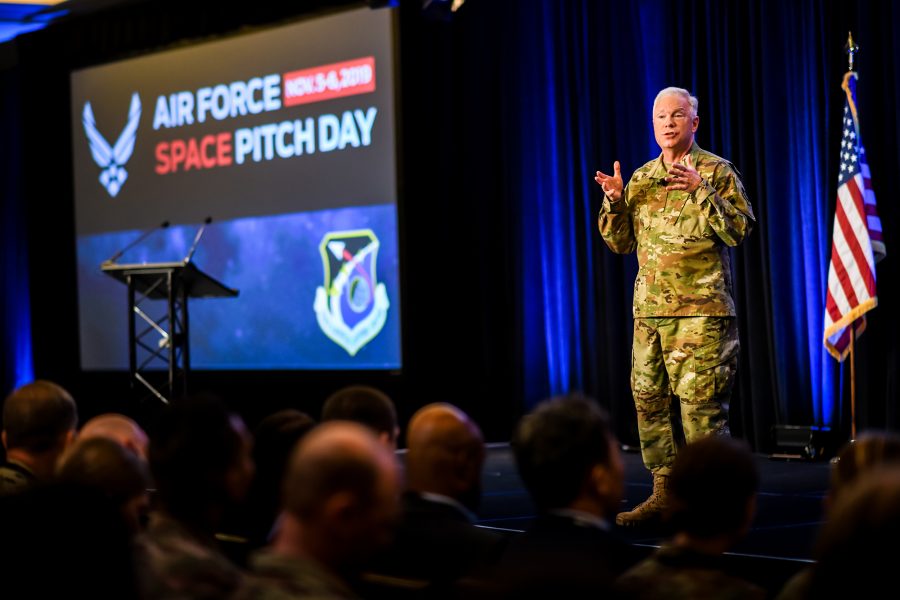Air Force Space and Missile Systems Center boss Lt. Gen. John Thompson appeared optimistic about the future of acquisition under the Space Force, despite industry’s concerns about changes foreshadowed in the draft fiscal 2020 defense policy bill.
Bipartisan, bicameral language would create a space acquisition council for the Space Force that leaves out SMC. It also establishes the position of an acquisition executive for space, breaking those duties off from the Air Force’s procurement chief.
While Thompson declined to address the legislation, he painted the congressionally directed changes as an opportunity.
“We’re really excited to build things, like, for instance, a space acquisition council, if that’s the decision that’s made. We’re excited to participate with them,” he said at an AFA Mitchell Institute breakfast. “Anything that can help us operate better as an enterprise, go faster, take advantage of more partnerships and introduce innovation into the space acquisition domain, are things that we’re excited to be part of.”
Critics of the future of space acquisition say there are too many groups with competing development interests—like SMC, the Space Rapid Capabilities Office, and the Space Development Agency—that all want to buy tools faster but could ultimately step on each others’ toes and slow the process.
SMC has had deep partnerships with many of those organizations over the years, Thompson said, forming various models of cooperation with established entities like the National Reconnaissance Office, Missile Defense Agency, and Air Force RCO, plus new approaches to working with more recent creations like the Space Development Agency and the Space RCO.
“Under the Space Force, if the [National Defense Authorization Act] is enacted as it’s currently written, those partnerships, I think, will just grow stronger,” he said.
SMC itself has overhauled how it manages space assets by organizing systems according to their place in the life cycle, not by program alone. The objective is to work faster, cut costs, and take a more holistic view that ensures everything works together as an enterprise.
National Defense Industrial Association President and Chief Executive Officer Hawk Carlisle, a former Air Force general who oversaw Air Combat Command until he retired in 2017, told Air Force Magazine Dec. 12 he worries the legislative language on acquisition will confuse companies at a time when the sector needs closer collaboration.
Fragmentation of the space acquisition process will be the biggest problem industry faces as a new Space Force stands up, and contractors will look for further clarity, Carlisle said.
Air Force officials have argued that companies don’t seem to have a problem finding their way to the service so far.
Moving forward, Thompson wants to explore possibilities of sharing personnel with organizations outside SMC and using other authorities to move programs faster.
“It’s absolutely necessary that we consider in a Space Force, how to continue the momentum that we started at SMC and started at SDA and started at Space RCO on how we field capability more quickly for warfighters,” he said.
As Congress appears set to establish a Space Force within the Air Force, Thompson said a small group under SMC is regularly working with the Air Force’s group in charge of planning for the new armed force. SMC will dive into more detailed planning once a Space Force is signed into law, he said.
The House passed the compromise bill Dec. 11 and the Senate plans to vote on it next week. A counterpart spending bill with further details is also slated to come out soon.
